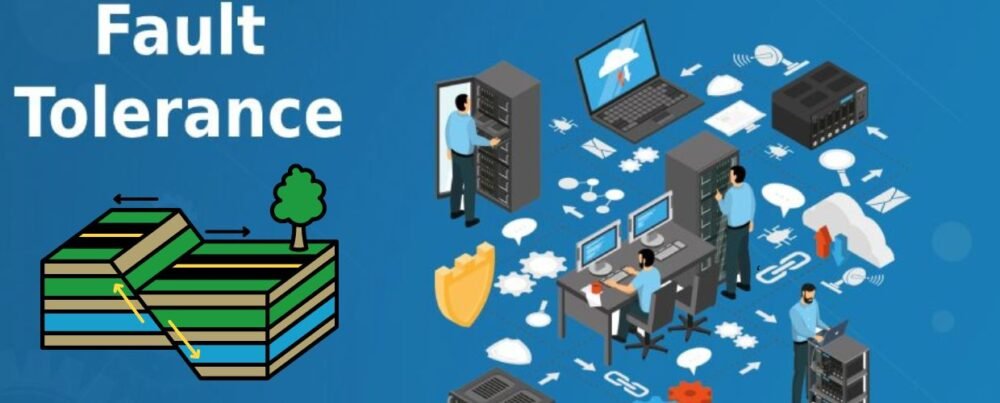In a world where technology permeates every facet of our lives, from critical infrastructure to personal devices, fault tolerance has emerged as a crucial safeguard against disruptions. As our reliance on complex systems grows, the ability to withstand failures and maintain functionality becomes paramount. This article delves into the profound realm of fault tolerance, its multidimensional impact on various industries, and the imperative for its integration into modern technology.
Essence of Fault Tolerance
Fault tolerance is the capacity of a system to continue functioning, albeit with reduced performance, in the face of component failures or unexpected events. It’s the art of designing systems to mitigate the impact of failures, ensuring that disruptions do not lead to catastrophic consequences. It spans hardware, software, and design principles, forming the bedrock of resilient and reliable systems.
Consider an aircraft’s avionics system—a quintessential example of fault tolerance. Avionics systems are designed with redundancy, meaning critical components have backups that seamlessly take over in case of failures. By employing strategies, aviation technology ensures that critical flight data, communication, and navigation systems remain operational despite failures, enhancing passenger safety.
Multidimensional Impact of Fault Tolerance
The influence of fault tolerance reaches beyond aviation—it resonates across industries that rely on technology. From healthcare to telecommunications to financial services, the unseen sentinel guards against disruptions, safeguarding vital operations and preventing financial losses.
Consider a hospital’s electronic health records system—an ecosystem where patient data, prescriptions, and medical histories are stored. In this context, it ensures that patient care remains uninterrupted even if a server or storage device fails. Switching to redundant servers or backup systems allows healthcare providers to continue their work without compromising patient safety.
Navigating the Fault Tolerance Landscape
The pursuit of fault tolerance presents a unique engineering challenge that demands a synergy of design ingenuity and meticulous planning. It involves identifying potential failure points, creating redundancy in critical components, and implementing failover mechanisms that facilitate seamless transitions between primary and backup systems.
Consider a data center—a hub of interconnected servers and networking equipment that powers cloud services and online platforms. Ensuring fault tolerance in a data center requires redundant power sources, backup generators, and failover systems that swiftly reroute network traffic. The engineering marvel lies in anticipating various failure scenarios and devising strategies to mitigate their impact.
Challenges and Triumphs
While fault tolerance’s benefits are evident, its implementation is challenging. Designing fault-tolerant systems often comes with additional costs regarding hardware redundancy and the development effort required to create failover mechanisms. Balancing the need for resilience with cost-effectiveness requires careful consideration and trade-offs.
Furthermore, achieving fault tolerance in complex systems requires a comprehensive understanding of the entire system architecture. It necessitates collaboration among engineers from different disciplines, including hardware design, software development, and system integration. However, these challenges also bring opportunities for innovation and collaboration, fostering the development of novel solutions that enhance system reliability.
A Vision for Tomorrow
As we peer into the future, the vision becomes clear—fault tolerance is poised to reshape our digital landscape into one that is robust, resilient, and adaptive. Its role in critical infrastructure, emerging technologies, and interconnected systems positions it as a cornerstone of modern innovation.
Imagine a world where smart cities use fault tolerance strategies to ensure uninterrupted services, even during natural disasters. Envision an Internet of Things (IoT) ecosystem where devices and sensors seamlessly adapt to failures, maintaining data integrity and communication pathways. These possibilities become attainable when they become an integral aspect of technological development.
Conclusion
Fault tolerance is not merely a technical consideration—it’s a commitment to building a future where technology empowers us to thrive despite challenges. By embracing these strategies, we can create systems that are resilient to failures, adaptable to changing conditions, and capable of maintaining functionality even in adverse situations.
In a world where our dependence on technology is greater than ever, the importance of fault tolerance cannot be overstated. Through collaboration, interdisciplinary expertise, and a dedication to excellence, we can fortify our digital future and ensure that the systems we rely on remain steadfast, even in the face of disruptions. As we continue to innovate and evolve, let us recognize that the bridge connects us to a more resilient and reliable technological tomorrow.





